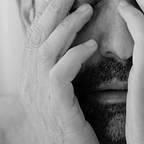A New Language for Photography
What photographers are doing unconsciously; and how to critique —
Critiquing and discussing photography, particularly for novices, can be difficult. Most critique is exceptionally subjective — various nice ways to say you don’t like something, and some guesses about what it is you don’t like.
Here is a more objective language I use to explore image aesthetics. And while I have my preferences — and you can see it in my photographs — these axes provide space for every image and photographer. There’s no right and wrong, no good or bad. Just more or less of various traits, any of which can be isolated and explored.
Content classification and discussion is easy: this is a still-life, this is a landscape. I’m drawn to modernism; I’m moved by Dorthea Lange. But structure — “composition” in particular — is almost impossible to explain or discuss. I’ve long been repulsed by forming photos through schema (e.g. rule of thirds, et al.) but never really had anything else to replace it with.
Over the past decade I’ve come to this way of thinking — not a post mortem on image geometry, but a better articulation of what all photographers are doing as they look through their viewfinders, whether they know it or not. I believe these are broad ideas and a structured means for improvement…
